Matador Network's Blog, page 1130
March 31, 2019
Ice climbing with Conrad Anker
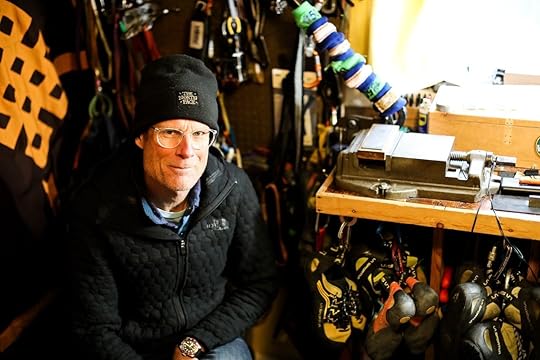
Conrad Anker first picked up an ice axe in 1982. He’s been climbing on ice ever since. “When I’m at home in Montana,” Anker says, “I absolutely live for ice climbing.” With the world-class Hyalite Canyon just a few minutes outside his hometown of Bozeman, Anker spends a lot of time every winter doing just that. He’s established dozens of routes in the canyon and uses the frozen waterfalls and overhanging rock walls of Hyalite as his exercise gym, gear lab, and training ground before heading to the Himalayas every spring.
Describing Anker as an expert ice climber would be a wild understatement. He’s one of the best, most technically sound and expedition-proven high-altitude ice and rock climbers in the world. Which is why I was thrilled, and a bit nervous, about joining him for a day of ice climbing on his home turf. The only catch was, I’d never been ice climbing before.
“Well, there’s a first time for everything,” Conrad replied in an email. “It might as well be on Tuesday!” Gulp. Followed by, “It will be fun, or complete misery, depending upon how you define fun…my guess is this will be worth two roller coaster rides. ;)” Double gulp. I’m not going to lie, that winky-face terrified me.
Here’s how the day went.
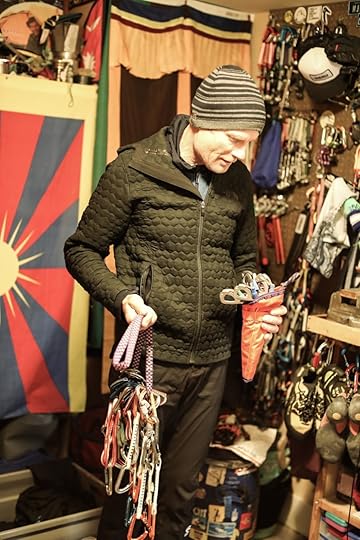
1
Conrad in his gear room prepping for the day’s climbing adventure. His gear room is his inner sanctum; it contains everything he’d need for an expedition to Antarctica, climbing Everest, or a day of ice climbing with a complete rookie in Hyalite Canyon. All the gear is meticulously organized, with Conrad’s favorite cartoons, news clippings, invitations, poems, art, and personal remembrances covering the walls.

2
Sharpening his ice axes before we head out. For mountaineers and climbers like Anker, gear is more than just tools; he has to be able to trust them with his life.

3
After a beautiful 20-minute drive from Conrad’s house in downtown Bozeman up Hyalite Canyon, we parked the car, loaded up the gear, shouldered our packs, and hiked a winding path through the snow-covered woods for another 15 minutes to the base of a 60-foot frozen waterfall. Here we are at the bottom of the first climb getting the ropes and other gear organized.
Intermission
News
Anonymous person pays for 70 homeless people to stay in hotel rooms to escape the frigid Chicago weather
Eben Diskin
Jan 31, 2019
Travel
A Matador guide to the best college towns in America
Mary Margaret Harris
Jul 7, 2017
News
Mount Everest climbers are now required to carry their own feces
Eben Diskin
Mar 6, 2019

4
Conrad gazing up the ice while assessing the route. “The more vertical the climb, the better,” he explains. “That way, if you fall, you’ll be on the rope.” When I looked up at the wall of ice, it was beautiful but completely foreign...I had no idea where I’d even begin to climb it. Conrad, on the other hand, looked like he was saying hi to an old friend.

5
Conrad engraves each pair of his ice axes with the same statement. “Hold Fast” is a favorite mantra, and he’s known for doing just that. He rarely falls.
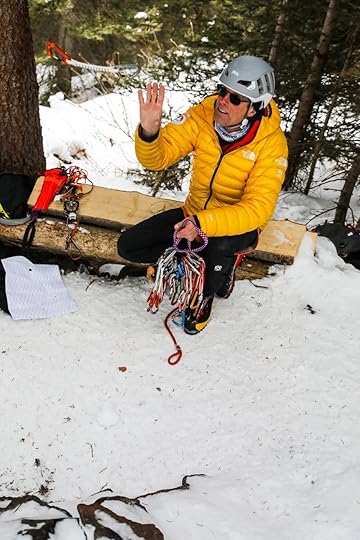
6
As Conrad got ready to climb, he gave me a few quick pointers. “Use your crampons. Trust the tools. Don’t grip too hard. ”I wasn’t sure what he meant by that last one but soon found out. The ice axe is shaped to support your hand so you don’t have to strangle it and burn out your forearms unnecessarily. Which is, of course, easier said then done when you’re 50 feet above the ground hanging on a vertical wall of ice.
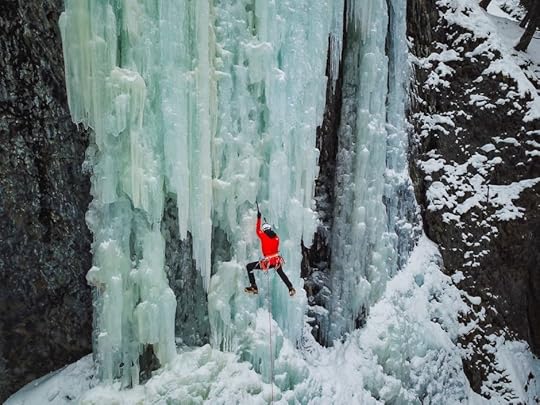
7
Watching Conrad approach the climb was fascinating. He went into a super relaxed state, moving languidly up to the ice and then smoothly transitioning into the vertical world. The whole process looked extremely natural and relaxed. His agility and spatial awareness on the icefall was astounding. It was obvious he was enjoying himself.
Intermission
News
Immerse yourself in Van Gogh’s Starry Night at this Paris exhibit
Eben Diskin
Mar 5, 2019
Outdoor
10 places to mix adventure with a beer/wine tour
Hal Amen
May 30, 2012
Outdoor
Rock climbing in Taiwan’s Dragon Bay will blow your mind
Matt Girvan
Mar 18, 2019

8
As he moved up the ice, he started to pick up speed. There I was, on belay for Conrad freaking Anker, and I could barely keep up as he placed each ice screw, drilled it into the ice, snapped in a carabiner, and clicked the rope through. I was mesmerized by his elegance, fluidity, and rhythm.

9
Conrad Anker perched on the icefall, taking a moment during the climb to enjoy the view and say hi to the birds...and the drone.

10
Climb on! After Conrad set up the top rope anchors he called down and had me lower him back to the ground, and then it was my turn. He handed me his ultralight “Hold Fast” axes and said one more time, “Don’t grip too hard.” That was it. I followed his footsteps up to the icefall, trying to look as calm and collected as he did. The first few steps were awkward in my crampons. Once I got on the ice, though, they were amazing. Between the ice axe and the crampons, you have a tremendous amount of control. It’s incredible to feel the ice axe take hold and kick the sharp crampons into the ice.
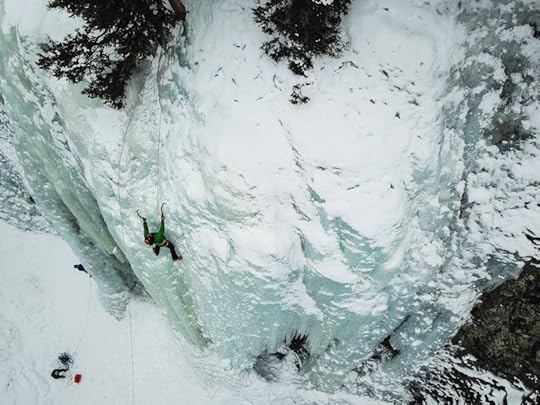
11
Here I am, nearing the top of the climb. Sweating profusely with my forearms bulging from gripping too hard. As the icefall became less vertical, the sharp ice axes and crampons began to feel less reliable. This was definitely the toughest part of the climb for me.
Intermission
News
Texas is having its biggest bluebonnet bloom in a decade
Eben Diskin
Mar 13, 2019
Outdoor
A cross-country skier’s guide to Yellowstone
Greg M Peters
Feb 23, 2010
Lifestyle
5 ways to stay physically equipped for adventure
Kitt Doucette
1 day ago
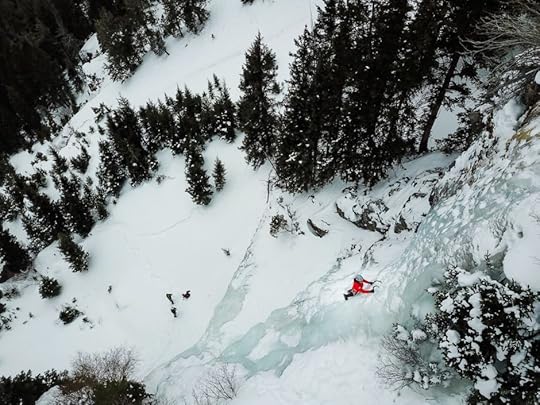
12
On to the next climb! I am way down below, keeping an eye out for chunks of ice crashing down as Conrad works his way up this beautiful two-tiered icefall in Hyalite Canyon.

13
Thank you, Conrad and Jenni! What a day. We finished the adventure back at Conrad’s house in the sauna, followed by a delicious home-cooked meal. I don’t think I could have asked for a better first experience ice climbing. It was challenging but also incredibly rewarding and such an amazing feeling to chink your way up a frozen waterfall with ice axes and crampons. Especially learning from a master of ice and rock climbing like Conrad Anker.
The post Ice climbing with Conrad Anker appeared first on Matador Network.

5 ways to keep yourself mentally equipped for adventure
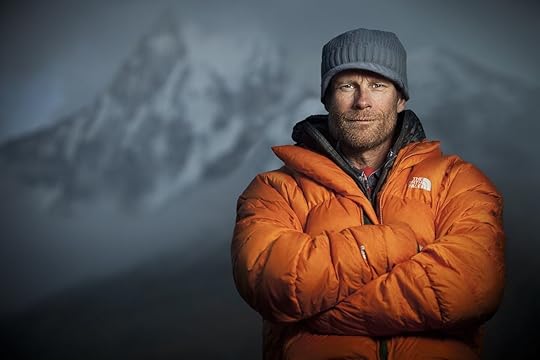
If elite climbers and mountaineers all have one thing in common, it’s mental toughness. They don’t give up. They can push their bodies and minds through extreme conditions, maintaining mental sharpness under duress in an incredibly hostile environment for days, if not weeks, at a time. One faulty knot, misplaced piton, or other mental bobble when climbing can spell disaster.
As an expedition leader to some of the world’s highest peaks and most dangerous places for the last 30+ years, Conrad Anker knows a thing or two about being mentally equipped for adventure. So listen up.
1. Train your weaknesses.
“This can be tough because first you have to understand and admit what your weaknesses are,” Anker explains. “Then you have to willingly and consistently practice the things you’re not good at.” Nobody likes forcing themselves to do something at which they feel inept (or maybe just less than confident), but that’s exactly what’s required if you truly want to be equipped for adventure.
“Once I break through that mental barrier of recognizing and acknowledging my weakness,” Anker says, “practicing it becomes a test of willpower. Then it gets easier every time I do it.” When asked what he currently sees as his biggest weakness, Conrad says, “living a demanding and extroverted public life even though I’m naturally very introverted.” Adventure comes in all kinds of packages.
2. Practice reverse risk analysis.

Photo: Cody Doucette
“At the beginning of every expedition and every climb,” Anker says, “I plot out what could go wrong.” This is called reverse risk analysis, and its goal is to identify the worst-case scenario in any situation that involves significant risk and work backwards to avoid the decisions, mistakes, and other controllable factors that add up to create that scenario. It helps you establish priorities when it comes to things to avoid and warning signs to watch out for.
Reverse risk analysis also allows you to address your fears and talk them through, acknowledging their existence and facing them with cool-headed reason instead of acting on emotion and adrenaline in the heat of the moment.
3. Be prepared — and know what “prepared” truly means.
“This is an obvious one,” Anker says, “but understanding what helps me feel prepared and confident is a big first step to accomplishing any goal.” Preparation comes in many forms, so discerning what exactly is needed to feel prepared for an adventure is largely a mental exercise. Yes, we want to be ready physically, with the appropriate gear and level of fitness, but being mentally prepared is a bit trickier, a bit more abstract.
“Identifying and accepting what I can’t control is part of my mental preparation,” Conrad explains. “Then I can let those things go and focus on what I can control.” During long expeditions in the mountains, this often has to do with rapidly changing and unpredictable weather that can keep climbers tent-bound for days on end. But no matter what you’re letting go of, the aim of this mental prep is to feel confident in your personal ability to handle whatever the adventure throws your way.

Photo: Cody Doucette
4. Know your gear.
For climbers like Conrad, gear is sacred. You literally trust it with your life. “When I’m preparing for an expedition,” Anker says, “I mentally review every piece of gear I need, visualizing how and when I’ll use it and where I’ll keep it.”
It doesn’t matter what type of adventure or trip you’re planning — focusing intent and attention beforehand on what you’ll need and when, how it will work, and where you’ll store it so it’s accessible at the right moment is a great way to mentally prepare for an upcoming journey. It can also help you avoid over- or under-packing, which isn’t always that big of a deal…unless, of course, you happen to be climbing a 20,000-foot peak.
5. Create your own comfort.
“Comfort is hugely mental,” explains Anker. “By structuring my mind to appreciate and create comfort in unlikely situations, I’m able to rest and relax when I need to.” Maybe it’s a cup of hot tea, a pair of dry socks, a warm sleeping bag, or a cool breeze on a hot night. The goal is to create a sense of comfort and ease that comes from within rather than relying on external factors.
It’s not an easy thing to master, but once you do, like Conrad, you’ll be able to find comfort no matter where you are, even if that’s swinging in a portaledge hanging on a vertical 6,000-foot wall at 20,000 feet in -40 degree temperatures and 70mph winds. Adventure on! 

Photo: Jimmy Chin/JimmyChin.com
The post 5 ways to keep yourself mentally equipped for adventure appeared first on Matador Network.

March 30, 2019
5 ways to stay physically equipped for adventure
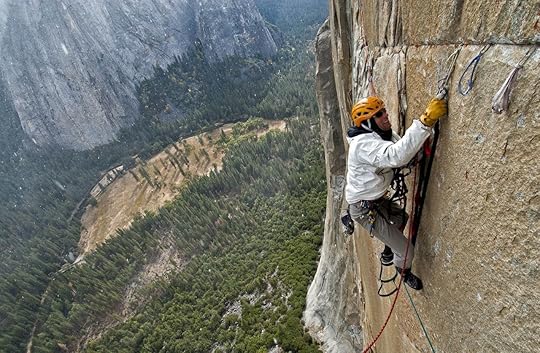
Conrad Anker’s accomplishments in high-altitude climbing are astonishing. For over three decades he’s been an elite climber and world-class mountaineer, often leading expeditions with climbers half his age in tow.
His list of first ascents is both lengthy and impressive, the pinnacle probably being the 2011 summit of India’s Meru Peak via its Shark’s Fin route, accompanied by Jimmy Chin and Renan Ozturk. That ascent — and Conrad’s personal story — became the subject of Chin’s successful 2015 documentary film Meru, propelling Anker into mainstream stardom.
Known for his extraordinary ability and endurance at high altitude, Anker summited Everest without oxygen in 2012 on a National Geographic Expedition, for which he also partnered with the Mayo Clinic to help study the effects of high-altitude climbing on the human body. All the tests results from that climb pointed towards a super-human Anker, performing at a level equal to that of athletes a fraction of his age; he was the only climber in the entire expedition to summit without using supplemental oxygen.
After 30+ years of adventure, Anker is still going strong. Here’s how he does it — and how you can, too.
1. Staying active
“This is probably the most obvious thing,” Anker says, “but it’s also the most important. The best way to make sure you stay in shape is not to get out of shape, especially as you get older.”
For Anker, this means a mix of climbing at his local gym in Bozeman, MT, getting outside and into the mountains as often as possible, climbing the frozen waterfalls in nearby Hyalite Canyon, and walking a few miles every day. “The human body is evolutionarily designed for walking the equivalent of four miles a day,” Anker explains. “It’s incredible how beneficial walking is for us.”
2. Heat = medicine
A few years ago, Anker installed a Finnleo sauna in the bathroom behind his office. It’s since become a daily ritual when he’s at home, and he absolutely swears by it. “After an intense day climbing,” Anker says, “relaxation for me comes in the sauna. It’s a very important part of my personal health care.”
His routine includes 15 minutes in dry heat, followed by pouring some water infused with birch essential oil over the hot rocks to increase the humidity for another 15 minutes. “The humidity accentuates temperature,” Anker explains, “encouraging blood to move through the body.” The heightened circulation helps muscles recover more quickly.
Other benefits of a daily sauna routine include increased cardiovascular health, stress relief, the flushing of toxins, and improved sleep, and it can also help reduce the severity and duration of the common cold and flu.
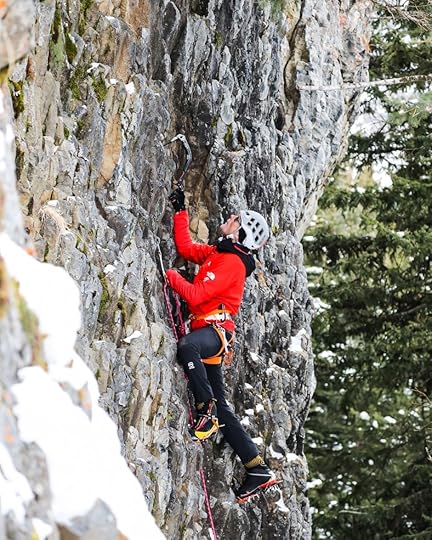
Photo: Cody Doucette
3. The 20 breaths
“This is my personal meditation practice,” Anker says, “taking 20 deep, mindful breaths. It re-centers and re-charges me, no matter where I am. Hanging off a big wall at 20,000 feet, in the sauna, or at my desk, those 20 breaths and around two minutes of calm focus do wonders for both my body and mind.”
Try it yourself and see if you agree: Even a couple deep breaths can bring about substantial shifts in both body and mind, especially when we’re outside our comfort zone or stressed. Inhale deeply through your nose for two beats, hold for two beats, then release and exhale for two beats. Do that 20 times and it’s like a strong cup of oxygen coffee.
4. Feeling the pump
“If I’m working at my desk,” Anker explains, “I’ll make sure to do about five to 10 minutes of exercise every hour, just enough to feel the pump.” For those who don’t know what “the pump” is, it’s that moment when your muscles become tight and engorged, full of blood and swollen with exertion. Climbers live for it.
Some of the quickest and easiest ways to feel the pump are pull-ups and push-ups — five minutes of each should do the trick. “I also like to make sure my core gets some work every day,” Anker explains, “so I’ll plan on doing a two-minute plank at 2pm when I’m working at home.”

Photo: Cody Doucette
5. Circular motions
“A good warm-up routine is really important for me,” Anker says. “Circular motions are key, especially for the shoulders and hips.” Taking a few minutes before any type of exercise to get the blood flowing is always a good idea, especially if it’s cold outside or you’ve been sitting for a while or sleeping. At the base of every climb, Conrad swings his arms and legs in circles both ways, followed by a few grip extensions with his hands, which is basically stretching your fingers out all the way and then clenching them to make a fist.
“It’s simple,” Conrad says, “and I love how good it feels as the blood and heat starts to move through my joints.” And with that, he’s equipped, ready for adventure. 
The post 5 ways to stay physically equipped for adventure appeared first on Matador Network.

March 29, 2019
Best Chinatowns in the North America
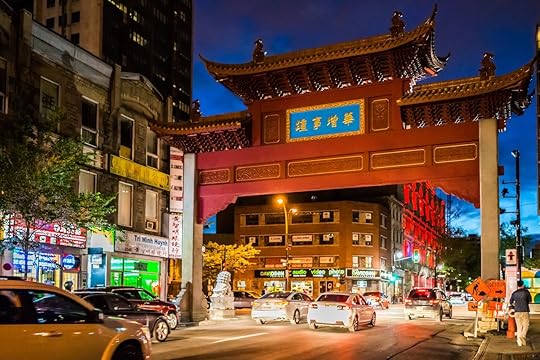
There’s a certain generic image that’s associated with the word Chinatown. The neighborhoods can be found around the world and have, in many ways, made the switch from immigrant communities to full-blown tourist attractions. Chinatowns in places like San Francisco, New York, Chicago, and LA are prime examples.
But Chinatowns aren’t limited to what you see in the movies. True Chinatowns also exist, oftentimes in unexpected places like tiny farm towns and French-speaking cities north of the border. Here are nine Chinatowns around North America you might not have known existed.
1. Toronto, Ontario
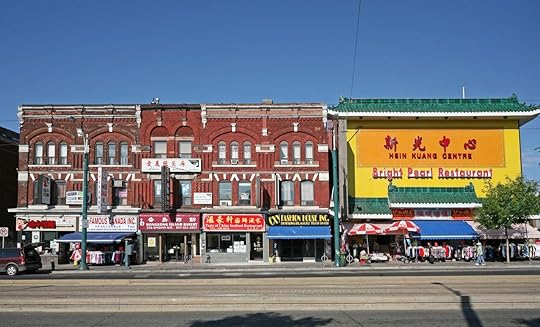
Photo: Spiroview Inc/Shutterstock
To Canadians, the fact that Toronto has phenomenal Chinatowns is about as big a revelation as the fact that Maple Leafs is spelled with an F. But Americans might be surprised to learn that Toronto has not one but three Chinatowns spread throughout the city proper and its suburbs. The main one sits around the intersection of Dundas Street West and Spadina Avenue, where Mother’s Dumplings and King’s Noodle have been drawing crowds for decades.
Eventually, the Chinatown grew to form an East Chinatown on Broadview Avenue and Gerrard Street. Another popped up in Scarborough in what looks like an average suburb, but one where all the signs are in Chinese. This was the first place to introduce North America to the concept of the Chinese Mall at the Dragon Centre, which is full of restaurants and stores designed to serve the needs of Chinese residents.
As rents in the city grow, recent immigrants have settled farther out, in Markham and Richmond Hill. Here, you’ll find some of the best, most authentic restaurants in the metro area, including Ding Tai Fung Shanghai and Dragon Boat Fusion.
2. Montreal, Quebec
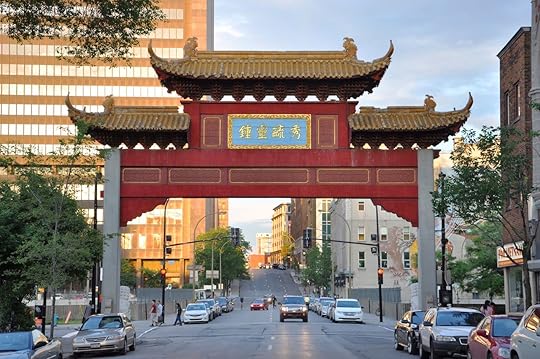
Photo: Wangkun Jia/Shutterstock
Montreal’s Chinatown is geographically smaller than some of Canada’s other, more renowned, Chinatowns. It does, however, feature big, arching Chinese gates along de la Gauchetiere Street in Old Montreal that welcome everyone to the neighborhood. The Quartier Chinois dates back to the late 19th century when immigrants who’d come to western Canada for work on railroads and mines began moving east. During the World’s Fair in 1967 when de la Gauchetiere Street was closed off as a pedestrian mall, it became a legitimate tourist attraction.
Today, you can stroll under the Chinese street signs and enjoy the Montreal sunshine, snap pictures of the elaborate “May an Old Song Open a New World” mural, and try noodles and bilingual fortune cookies at Wing Hing Lung. For full-on dim sum, try Ruby Rouge or Kim Fung, or spicy Szechuan at Kanbai. Since the neighborhood has grown past a simple tourist trap, you can also peruse Chinese markets and Asian pharmacies for traditional eastern medicines.
3. Honolulu, Hawaii

Photo: Theodore Trimmer/Shutterstock
Theoretically, it shouldn’t surprise anyone that the closest major US city to China has a pretty solid Chinatown. But tourists don’t often make it to the covered sidewalks and brick streets of America’s most tropical Asian district. For years, this area near downtown was Honolulu’s red light district, awash in casinos, prostitution, and all the other vices off-duty sailors looked for. But it’s seen a rehabilitation over the past 15 to 20 years. Returning to its roots, Chinatown is now home to Chinese fruit and meat markets where you can shop among recent immigrants from all over Asia for ingredients you’d be hard-pressed to find on the mainland.
Like so many rehabilitated neighborhoods, Honolulu’s Chinatown is also attracting artists, fancy cocktail bars, and popular restaurants, much of it centered around the iconic Hawaii Theatre. You’ll find art galleries dotting the streets alongside bars like Tchin Tchin! and the divey Smith’s Union. You’ll find restaurants far beyond traditional Chinese, like inventive, second-generation Asian fusion at Pig and the Lady, Puerto Rican-inspired French food at Grondin, and East African at Ethiopian Love. It’s a bit of a ride from the beaches of Waikiki, but it’s also the best way to see what life in Honolulu is like for people who live there.
4. Oakland, California
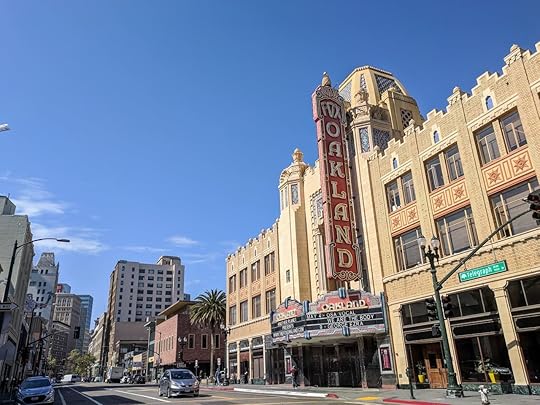
Photo: EddieHernandezPhotography/Shutterstock
As with pretty much everything else in Oakland, the city’s Chinatown gets forgotten behind the more-ballyhooed one in San Francisco. But, also like pretty much everything in Oakland, you’ll find it’s less-crowded, cheaper, and easier than its counterpart across the bay. Oaktown’s Chinatown dates back to the 1850s when Chinese immigrants settled here right around the time of the Gold Rush. It’s grown to include other communities that came to California from Korea, Japan, Vietnam, and other parts of Southeast Asia.
Oakland has a highly unheralded street mural program, much of which is visible walking along the main drag on 8th Street with depictions of colorful birds, tigers, and other animals. You can stop in and take a tour of Oakland’s famous fortune cookie factory, which costs only $1. Shan Dong is the go-to for fresh noodles, and you can get some of the best banh mi in America at Cam Huang. Hit the neighborhood early in the morning, and you’ll also catch locals practicing Qi Gong and Tai Chi in Madison Park.
5. Houston, Texas
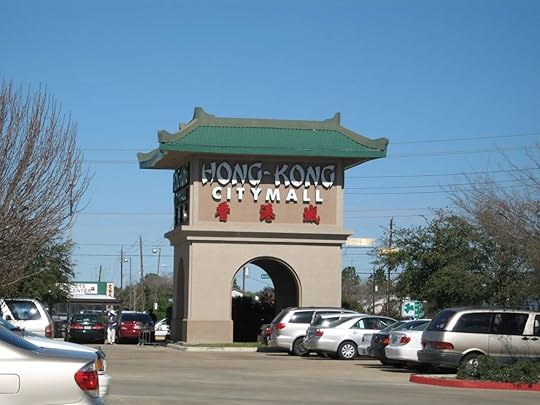
Photo: Hong Kong City Mall/Facebook
America’s fourth-biggest city often doesn’t get enough credit for, well, pretty much anything but space and oil. It’s a fantastic, multicultural place, and among its more underrated attributes is its thriving Chinatown, which is now more of a pan-Asian enclave with Vietnamese, Korean, Malaysian, and even Pakistani residents.
The city’s main Asian enclave sits west of the city along the Sam Houston Tollway. But driving long distances is as Texan as cowboy boots, so once you’ve made the trek you’ll be rewarded with the best multi-ethnic neighborhood in America. You can try Cajun-Vietnamese fusion at Crawfish & Noodles, Taiwanese dumplings at San Dong Noodle House, or go southwest Asian at Avesta Persian Grill. You’ll find the Asian mall at the Hong Kong City Mall, where you can shop for Japanimation stuff at Moshi2 then try everything from bubble tea to taro ice cream.
6. Richmond, British Columbia
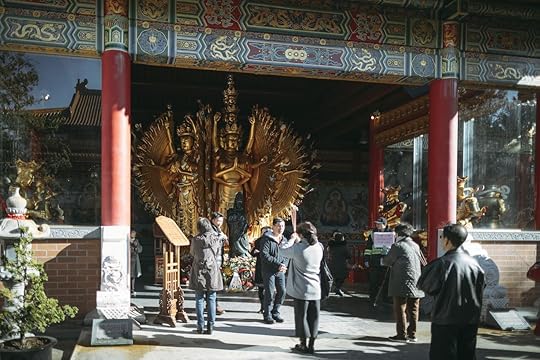
Photo: Tourism Richmond
This Vancouver suburb is adjacent to the International Airport and doesn’t have a Chinatown per se, but it is the most predominantly Asian city in North America with nearly three-quarters of its 190,000 residents claiming Asian ancestry. Over half the population is Chinese, so if you’re visiting Vancouver, your best bet for Chinese food is going to be outside the city in Richmond.
Richmond is the only city on the continent with a dedicated dumpling trail, which takes you through 19 of the city’s best restaurants sampling everything from gyoza to shumai. For something different, head to the Golden Village neighborhood where restaurants specialize in foods from different regions of China, leading some food critics to call it the best Chinese food in the world outside Hong Kong.
7. Locke, California
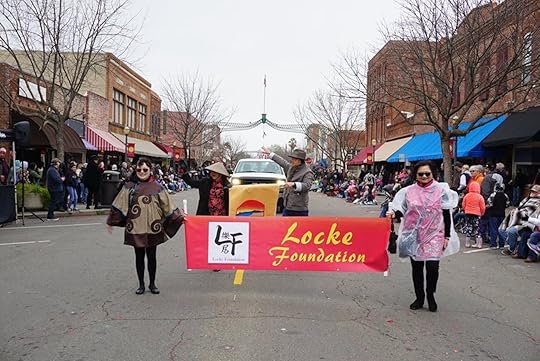
Photo: The Locke Foundation/Facebook
Chinatowns aren’t limited to big cities. The oldest rural Chinatown is in the river delta city of Locke. The entire city is a historic district, designated to preserve the architecture and culture dating back to 1915. The ramshackle wooden buildings along Locke’s main street once housed gambling halls, fish markets, grocery stores, and brothels. Now the population is down to about 80, maybe 10 of which are Chinese.
That said, it’s one of California’s great, if lesser-known, roadside attractions. Dai Loy Gambling House Museum, the Locke Chinese School Museum, and the Jan Ying Museum tell the story of a rough-and-tumble farm community a century ago. You’ll find the most action if you go in May for the Locke Asian Pacific Spring Festival, complete with lion dances and scores of traditional Chinese food.
8. Las Vegas, Nevada

Photo: Kobby Dagan/Shutterstock
As Sin City morphs into actual city, its Chinatown has become the most exciting new district in America. About two miles off the Vegas Strip on Spring Mountain Road, a giant Chinese gate frames The Wynn in the distance, where the smell of garlic and pork cuts through the dry desert air. The smells are likely coming from Chengdu Taste, a Sichuan-style spot that serves eating-challenge-spicy food rich with garlic and chilies.
Like most newer Chinatowns, Vegas’s offers food from other Asian countries, and a trip into the Mountain View Plaza gives you the opportunity to try Vietnamese food from District One and Mongolian specialties off a conveyor belt at Chubby Cattle. You’ll also find sushi better — and cheaper — than the chic spots in the casinos at Yui Edomae.
The architecture here is interesting as well, as the typical Vegas strip malls are topped with orange pagodas. While it does still feel a little like suburban sprawl, it still has enough character to make it a distinct part of the city.
9 Monterey Park, California

Photo: Feng Cheng/Shutterstock
No surprise that the birthplace of bedroom communities also claims the first “suburban Chinatown” in North America. The LA suburb of Monterey Park went from a neighborhood primarily made up of Mexican and Japanese farmers to the “Chinese Beverly Hills” when the Chinese community left Downtown LA’s original Chinatown and headed about eight miles east. Because this Chinatown has seen a number of cultural iterations, it’s also home to the Vincent Price Art Museum, with a huge collection of Mesoamerican art, as well as loads of Spanish revival architecture and the Garvey Park Ranch Observatory.
That said, driving through the streets of Monterey Park the feel is distinctly Chinese. Asian characters fill the signs and restaurants like NBC Seafood and the Mandarin Noodle House. In fact, the San Gabriel Valley is one of North America’s best places for Chinese food. In January, you’ll come across one of the biggest Lunar New Year parties in America, with a parade, Chinese dragons, and plenty of delicious street food. 

More like this: How LA’s San Gabriel Valley became North America’s best place for Chinese food
The post The 9 most underrated Chinatowns in the US and Canada appeared first on Matador Network.

Tribal Gathering festival in Panama

The knowledge and traditions of indigenous cultures around the world is invaluable yet always at risk of disappearing in the face of both systemic oppression and younger generations losing interest in maintaining these traditions. One festival is trying to celebrate and preserve this indigenous knowledge by bringing together 60 tribes from 30 different countries to share their rituals and traditions: Tribal Gathering, an 18-day festival in Playa Chiquita, Panama. A noble cause, for sure, but there’s just one potential problem in the execution: It’s combined with an EDM festival.

Photo: Jessica Devnani
Tribal Gathering has been dubbed a “conscious festival.” What sets these apart from your average music festival is that they often integrate a daytime program of workshops, speakers, and activities, generally having to do with personal growth and spirituality. Attendees can choose to buy a ticket for either part or the entire festival. The first part is focused on sharing indigenous knowledge. Each day the tribes hold a full schedule of sacred rituals, ceremonies, and talks on their way of life.

Photo: Jessica Devnani
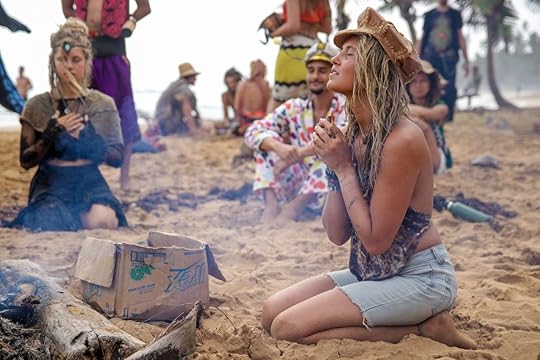
Photo: Jessica Devnani
The second part is your typical psychedelic trance, or psytrance, music festival. During this time, almost all of the tribes leave, and a new stage opens up to play psytrance music (a subset of EDM) almost 24/7. The vibe of the festival changes as the focus shifts from learning to partying.
In theory, the two sides of the festival are meant to have a church-and-state separation, with the first half of the festival being fully dedicated to the indigenous tribes and a large emphasis being placed on respecting their culture. The dancing, drinking, and drugs are meant to come after. In reality, the partying mentality seeps into the entire festival, with potentially problematic consequences. But beyond the partying, there’s also the issue of whether this community of non-indigenous, primarily white festival-goers deserve to take part in such sacred traditions, regardless of their positive intentions.
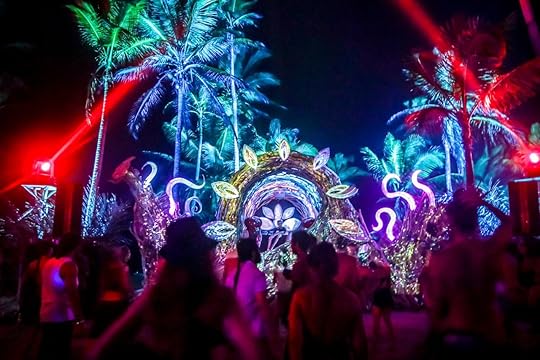
Photo: Jessica Devnani
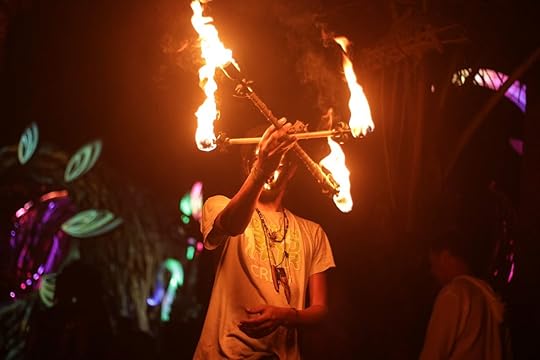
Photo: Jessica Devnani
In the new Matador Originals film Tribes and Trance, I investigate the blending of these ancient and modern-day cultures at this festival. What emerges is the question of whether these two worlds belong together or if it’s simply impossible for the two to coexist without being exploitative to the tribes. Decide for yourself by watching our short documentary below. 

More like this: 11 important Native American heritage sites in the US that you need to visit
The post This festival brings together 60 Indigenous tribes with EDM partiers — but should it? appeared first on Matador Network.

Landmarks as amateur sketches
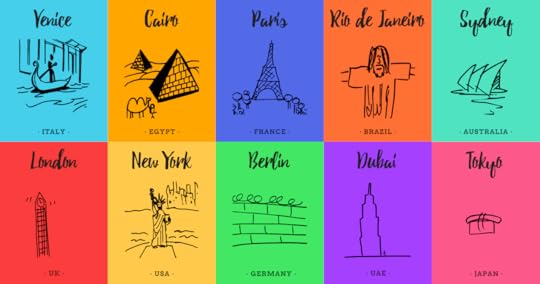
When you hear Boise what comes to mind? Nothing? Potatoes? Lovely a place as the capital of Idaho is, it doesn’t exactly conjure up images of… anything. A big part of that is because it doesn’t have an icon, a landmark or associated image that immediately pops into the collective conscious when people hear the name. Some cities have one highly distinct image associated with them, like gondoliers in Venice. Others can be a bit more complex, like New York.
To see what images people associated with the world’s biggest cities, Traveloka, a Southeast Asian travel company, asked 108 people to draw the first thing they thought of when they heard a cities name. The results range from second-grade refrigerator art to pretty decent sketches, the highlights of which are below.
Venice

Photo: Traveloka
No city had a more overwhelming common image than Venice, where a full-on 82 percent of respondents drew pictures of gondolas on gondoliers. Of course, it’s pretty hard to draw pictures of stagnant water in the summer, and crowds haven’t become as synonymous with this city as, say, Tokyo. Still, of the cities polled, Venice had the strongest image recognition, even if some drawings looked like family therapy sketches.
Cairo

Photo: Traveloka
Though any trip to the Egyptian capital will yield disappointingly few pyramids, that didn’t stop respondents from drawing their best versions of them in 81 percent of responses. Some were downright artful, with 3D structures fronted by a stately sphynx. Others looked pretty indiscernible from diagrams from a third-grade geometry class. Or, if you want to get imaginative, the Pitons in St. Lucia. Either way, a drive out to Giza can take 45 minutes to an hour in traffic, another site that didn’t appear in drawings.
Paris

Photo: Traveloka
The Eiffel Tower is still the unwavering symbol of gay Par-ee, appearing in a full 78 percent of drawings. Some look like poorly sketched logos for the University of Alabama. Others could be over-decorated Christmas trees. The other popular image of Paris seems to be the croissant, though some look more like shrimp. Bread was also a common theme, often appearing with wine.
Rio de Janeiro

Photo: Traveloka
It really speaks to the power of religion that a city synonymous with beautiful beaches and energetic samba dancing is still best known for the big statue of Jesus that watches over the city. Christ the Redeemer showed up in 64 percent of drawings, though many were just crosses that might as well have been hanging in your grandmas living room. One was even a stick figure, perhaps the most provocative image of Christ we’ve seen in centuries. Other images include soccer balls, despite the fact Brazil hasn’t sniffed a World Cup in two decades. And favelas, probably the most accurate depiction of Rio if not the most common.
Sydney

Photo: Traveloka
Admittedly, the Sydney Opera House is pretty hard to draw, as it’ll either end up looking like a bunch of shark fins or a badly windblown skyline. But kudos to the handful of talented respondents who put together a pretty decent rendition, as 66 percent of people drew the iconic performing arts center in their depictions of Sydney. Animals were also popular, with koalas and kangaroos dominating the sketches despite very few living within city limits.
London
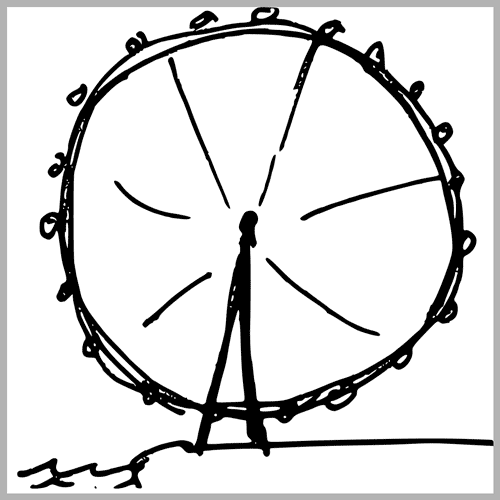
Photo: Traveloka
Big Ben and the London Eye dominated London drawings, though no sketches of the world’s most famous clock included the scaffolding that’s been blocking it from tourists since last year. Double-decker buses and London Underground signs were also popular depictions, making London the world’s best-known city for public transportation.
New York

Photo: Traveloka
Though the Statue of Liberty was the most popular single image of New York City, its food came in a close second. Bagels, pizza, pretzels, and apples made numerous appearances. There were some striking drawings of the skyline, as well as more than one depiction of the Twin Towers. One artist even drew a Yankees logo, but thankfully not one person referenced the Jets.
Berlin

Photo: Traveloka
History? Art? The world’s capital of electronic dance music? All apparently forgotten in the long shadow of beer, which appeared in 15 percent of Berlin sketches, nearly as often as the Berlin Wall. The Wall was in about a quarter of drawings, never looking like much more than a stack of bricks. Fortunately, not one person drew a picture of underground sex clubs. Or at least not anyone Traveloka was willing to publish.
Dubai

Photo: Traveloka
For some reason, indentured migrant construction workers didn’t make their way into a single image of Dubai. Lacking the city’s most common site, most respondents went with the Burj Khalifa (or what they thought it looked like) and the Burj Al-Arab. Followed by nondescript skylines and camels. Fat bags of cash also made an appearance, as did various depictions of the Palm Islands.
Tokyo

Photo: Traveloka
Since most people can’t really draw the Japanese characters that light up the city at night, it’s no surprise Tokyo’s responses were all over the board. Hello Kitty, Sumo wrestlers, and geishas were all popular responses, and traditional food made up 22 percent of all drawings. Godzilla even made an appearance, as did pictures of endless crowds of stick figures. Sony also was included here, the only brand name other than the Yankees strong enough to elicit immediate associations with a city. 

More like this: These awesome GIFs show how 10 nation’s flags have changed throughout history
The post How people see the world’s biggest cities, through amateur sketches appeared first on Matador Network.

Challenges of Black British travel
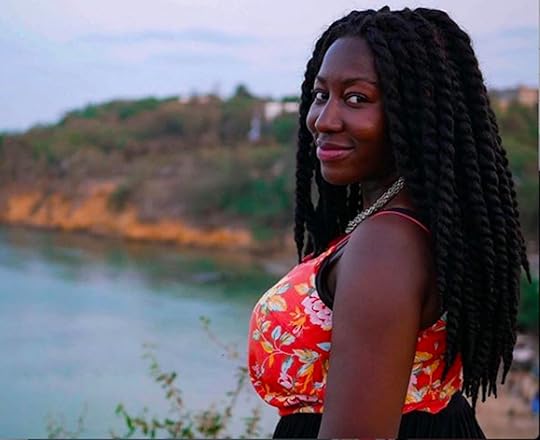
From discrimination and safety issues to not always relating to other travelers simply due to the color of our skin, black travelers collectively face a set of unique challenges around the world. But if you delve into the black travel movement, you will quickly notice the stark differences among us: our locations, cultures, as well as other intersectionalities of our identities like gender or religion, all shape our experiences. This is no different for the Black British community, a historically underrepresented and often misunderstood group, especially in the travel world. With more and more Black British travelers partaking in both short and long-haul travel, it’s time to shed light on our unique perspectives. Here are five struggles that we often face whilst abroad.
1. We have to convince people around the world that black people do indeed live in the UK.
View this post on InstagramA post shared by Vivienne Dovi (@travellingwithmelanin) on Jan 31, 2019 at 11:25am PST
From a foreign perspective, the UK is commonly known for a few things: the Queen, Buckingham Palace, Big Ben, tea, and so on. It’s unfortunate that our multicultural cities don’t always make the list.
With black and minority ethnics making up 41 percent of the capital’s population, London is renowned for being a melting pot of different cultures, which is reflected through our food, entertainment, and language. Meeting people of various nationalities in London is so common that we find it amusing when we travel to other countries, only to be told that the idea of black people living in the UK is mindblowing before being adamantly told that we are American or only African. Traveling while black is already challenging, but now we have to prove our identities to the world, as well.
2. We never feel African or Caribbean enough, but we never feel British enough either.
View this post on InstagramA post shared by Vivienne Dovi (@travellingwithmelanin) on Oct 17, 2016 at 11:54am PDT
The Black British community is either of African or Caribbean descent, and many of us are the first or second generation to be born in the UK, so we are closely tied to our heritage. Growing up in an African or Caribbean household is the norm, where our parents raise us the only way they know how: through cultural practices used in their respective countries.
Therefore, when we travel back to Africa or the Caribbean, we feel like we are going back home. Many of us have traveled back to visit relatives from an early age, and in the case of Africans, we can trace our heritage right back to our family’s tribe. But knowing our heritage doesn’t always feel like it’s quite enough because we can never fully relate. This is a consequence of many factors, but an inability to speak our mother tongue and/or understand all cultural references are often key reasons. And even if we do understand cultural etiquette, we still stand out and are sometimes treated as foreigners.
Equally, we never feel fully British. Yes, we were born in the UK, and yes, we can relate to the culture, but racial discrimination prevents us from feeling truly at home. Dealing with microaggressions, sometimes on a daily basis, is enough for us to find our daily lifestyles a challenge. And when questions such as “Where are you really from?” are so commonplace, we are quickly reminded that Black British culture is complex. This leads us to embrace both of our cultures but experience an identity crisis, often early on in our lives.
3. We are often assumed to be African American.
View this post on InstagramA post shared by Vivienne Dovi (@travellingwithmelanin) on Aug 30, 2016 at 10:51am PDT
While this may not be considered a struggle to some, it can become annoying when people abroad always assume that if you are not born and raised in Africa or the Caribbean, you can only be African American if you are black and exploring the world.
The notion behind the assumption perpetuates a problematic stereotype: Only African Americans can afford to travel, but Africans can’t. African American culture is consequently viewed as the global standard of blackness — a harmful idea that all black people are perceived as the same, sharing the same experiences and struggles, while being expected to represent the entire black population when abroad.
More often than not, Black British travelers are asked to speak on topics that don’t directly relate to us. From the horrifying centuries of slavery that disconnected millions of African Americans from their heritage to the depressing presidency of Donald Trump, African Americans face challenges we could only imagine having to deal with on a daily basis. For us Black British travelers, these topics are not ours to define, so we should not be expected to discuss them as if they were.
This portrayal of black culture abroad leads to people thinking that African travelers are too African and that other black cultures, such as the Black British community, aren’t black enough.
4. We struggle to come to terms with our privilege — and lack thereof.
View this post on InstagramA post shared by Vivienne Dovi (@travellingwithmelanin) on Apr 7, 2017 at 2:36pm PDT
Living in a predominantly white country, discriminatory practices aren’t unheard of in the UK, and being black certainly doesn’t offer us a right to privilege. However, living in a globalized society, the Black British community is aware that our nationality offers us many privileges abroad: Our passports are among the strongest in the world, we earn higher incomes than many other countries, and our accents are universally appreciated. Traveling from a young age is quite the norm too, as visiting Paris on school trips is an early memory most of us share.
But while we are abroad, our awareness of our privilege immediately draws our attention to the poor treatment of black people who have immigrated to that destination directly from Africa. Black immigrants living in Westernised communities may be viewed as poor, sexually promiscuous, dangerous and/or violent, and we as Black British travelers are viewed no differently — until we open our mouths or show our passports.
Given the complex nature of our identity as British African or British Caribbean, we quickly recognize our problematic form of privilege: We will be treated better than Africans who were born and raised on the continent, even when we are in African or Caribbean countries.
While our privilege is apparent during our traveling experiences, the reality is that we know it will soon come to an end as we return to the UK, where we are often not afforded the same experience.
5. We rarely find other Black British travelers abroad.
View this post on InstagramA post shared by Vivienne Dovi (@travellingwithmelanin) on Dec 20, 2017 at 9:35am PST
The beauty of travel lies in learning about cultures and embracing differences, but we are all guilty of jumping at an opportunity to connect with someone who shares similarities with us. There’s nothing like meeting someone who understands local references, slang, and similar experiences from our younger days. Finding another black traveler of any nationality is difficult while abroad, often resulting in the unsaid-but-well-known etiquette of giving a head nod or striking up a random conversation to celebrate bumping into each other.
But while we are grateful to meet any black traveler on the go, the opportunity tends to be quite rare unless we are visiting popular destinations among the Black British community, such as Amsterdam or Dubai.
Traveling can be isolating at times. Since different black communities can face unique struggles, highlighting our experiences with people who can relate really matters. The same prejudices that can shape our experiences also tie us together. Luckily there is growing interest from the Black British community to widen our horizons. With platforms such as Melanin Travel and Wind Collective that provide black travelers the opportunity to share the beauty of seeing the world, hopefully, there will be a day when the struggles for Black British travelers are discussed more openly in order to change the narrative of black travel around the world. 

More like this: The 6 best destinations for black travelers in 2019
The post Not British or African enough: the struggle of being a Black British traveler appeared first on Matador Network.

Wacky museums to visit in Las Vegas
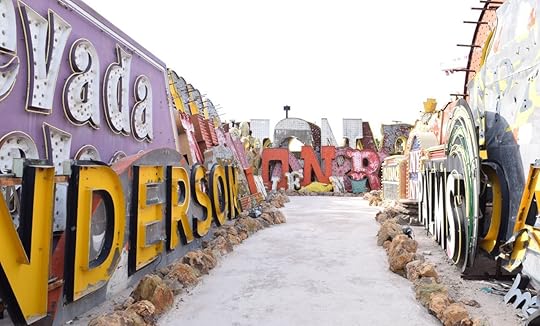
The endless stream of taxis shuttling visitors from McCarran International Airport to the Las Vegas strip is as monotonous as the turnover on the $1 poker machines and Blackjack tables those visitors plan to park themselves in front of. Vegas is actually full of incredible things to do and see, and most don’t even involve throwing your money away. To really throw your cabbie for a loop, have them drop you at one of the city’s museums, some of which pay tribute to subject matter that is only top of mind in a place like Sin City. Many of them may be named after a D-List celebrity, but don’t let that deter you. You’re actually going to take some value from paying the admission fee, something that is certainly not a guarantee anywhere on Las Vegas Blvd.
1. Tim Arnold’s Pinball Hall of Fame
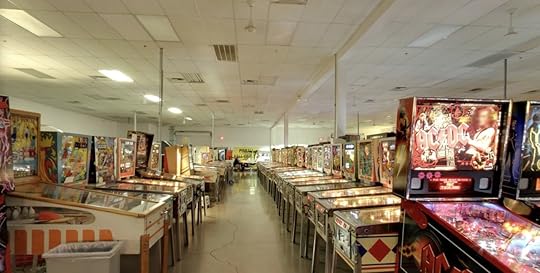
Photo: Pinball Hall of Fame
An entire hall honoring the unknown greats of pinball’s past is the best excuse you’ll ever find to journey back to your middle school days. At the Pinball Hall of Fame you’ll find a large, grand hall that houses nothing more than an extensive collection of classic pinball machines. They aren’t just for looking at, either. You can play on 152 different pinball tables, each ordered and chronicled in a series of detailed lists that explain exactly why that specific machine is worthy of its space on the floor.
Where: 1610 E. Tropicana, Las Vegas NV
2. The Mob Museum

Photo: Fotos593/Shutterstock
The Mob Museum is the ultimate insider’s peek into American mob activity though not necessarily in the way you’d think. The museum is packed full of photos and artifacts from mob activity in Vegas and beyond, but the narrative behind each is told from a historical perspective much more than a tribute. You’ll learn about the impact that organized crime had on the country, and the facility even houses a distillery that produces spirits reminiscent of the mob-run moonshines that kept Americans satiated during the 13-year dry spell.
Where: 300 Stewart Ave, Las Vegas, NV 89101
3. National Atomic Testing Museum
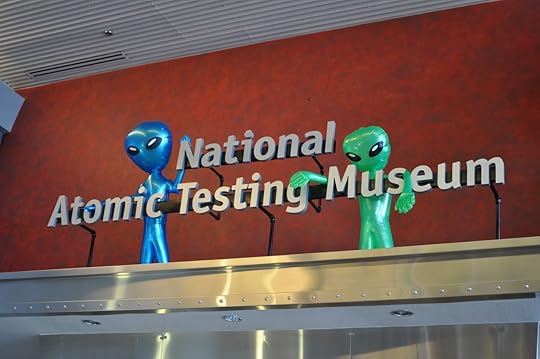
Photo: Pe3k/Shutterstock
A patch of open desert north of Vegas served as the Nevada Test Site from 1951 to 1992. Nuclear weapons were tested there both above and below ground, and the National Atomic Testing Museum tells the story of the site and the hype that surrounded it over its nearly 40-year span. You’ll find artifacts and remnants of the testing along with more than you ever wanted to know about how radiation affects the natural world, and you can even experience a simulated atmospheric bomb blast — one that won’t melt you and friends, of course.
Where: 755 E Flamingo Rd, Las Vegas, NV 89119
4. Zak Bagan’s The Haunted Museum
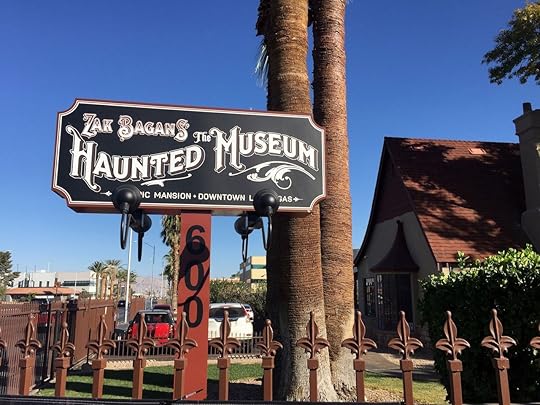
Photo: JMOF/Shutterstock
A museum exhibiting the paranormal is about as Vegas as it gets. The stuff you’ll see here — which supposedly chronicles “scientifically proven” ways to communicate with the dead — is both somewhat scary and entirely weird. Check the VW van where Dr. Jack Kevorkian did his work ending the lives of patients with terminal diseases, and then meander past the wine cabinet from the movie The Possession over to the staircase from the former Demon House in Gary, Indiana, where a family was reportedly possessed by demons in 2011. There’s nothing in the museum that isn’t worth a double-take, and no one under age 16 is allowed. If you need the perfect way to get your mind off of what happened last night on the strip, The Haunted Museum is it.
Where: 600 E Charleston Blvd, Las Vegas, NV 89104
5. Cannabition Cannabis Museum

Photo: Cannabition Cannabis Museum/Facebook
Nevada formally legalized recreational cannabis on January 1, 2017, and this former “no tolerance” state has since embraced cannabis culture into its mainstream. Part of The Fremont Experience in downtown Vegas, the Cannabition Museum combines an immersive cannabis experience that tells the plant’s troubled history in the United States and ends with a nod to the positive progress that has swept the nation in recent years. Be ready to see some of the trippiest cannabis art you’ve ever seen, from glassworks to paintings to furniture. The exhibits change with time as more cannabis industry brands come on board with telling their story and sharing the history of their products. Bring a notepad, because the museum is ripe with tips on growing, smoking, and even cooking with the plant. Plus, it houses the world’s biggest bong.
Where: 450 Fremont St #140, Las Vegas, NV 89101
6. Burlesque Hall of Fame

Photo: The Burlesque Hall of Fame/Facebook
The Burlesque Hall of Fame showcases this tempting form of dance as a visual art with an important historical legacy and highlights the stars of its past. It is part of the city’s rapidly growing downtown arts district, making it walkable from downtown and parts of Las Vegas Blvd. The exhibits are comprised of burlesque outfits and props from the 1960s to today, along with a trail of media articles and photos documenting the rise of burlesque in America’s nightlife culture. The space is as much a museum as a hall of fame though each year it presents a “Living Legend” award to a dancer or activist important in its ongoing legacy.
Where: 1027 S Main St, Suite 110, Las Vegas, NV 89101
7. The Neon Museum

Photo: Neon Museum
The history of Las Vegas can, in many respects, be told through its signs. The Neon Museum is comprised of a series of exhibits that showcase the city’s history of bright and quirky signage. Make the Neon Boneyard your first stop, where you’ll walk through an extensive series of rescued signage from old hotels and casinos, nightlife establishments, and events. Part of the museum’s experience is a walking tour past a collection of historical signs hung throughout public spaces in and around both downtown and the strip, which you can walk through on a self-guided expedition starting at the intersection of Las Vegas Blvd. and Washington Ave.
Where: 770 Las Vegas Boulevard North, Las Vegas, NV 89101 

More like this: The 7 best recreational cannabis dispensaries in Las Vegas
The post 7 wacky museums in Las Vegas you need to check out appeared first on Matador Network.

Tourist dies at the Grand Canyon

The Grand Canyon is one of the most popular and widely recognizable tourist attractions in the world, but unfortunately, it can also be quite dangerous. Steep inclines, sharp drops, and precarious trails mean you need to be on high alert, no matter how badly you want to get that Instagram photo. Just yesterday, a Macau man, who was part of a tour group from Hong Kong, fell to his death at Eagle Point near the Skywalk. The Skywalk offers views as far as 4,000 feet into the canyon. The man fell about 1,000 feet below the rim, where a helicopter was sent to retrieve his body.
According to Alice Chan Cheung Lok-yee, executive director of the Travel Industry Council of Hong Kong, “The trip to the national park was part of a self-pay activity, and the entire group was guided by the Hong Thai tour guide and a local guide who also spoke Cantonese.”
The National Park Service and local medical examiner’s office are currently looking into the cause of death. A spokesperson for Grand Canyon West, however, claims he died while trying to take photos. This is not uncommon, unfortunately, as many tourist deaths are often due to a lack of caution while taking photographs.
Around a dozen people die each year at the Grand Canyon, and this man’s death is the second reported this week.
Travel writer James Hong Ming-sang warns travelers against the allure of sacrificing safety for the perfect photo. “People are too dedicated to getting the perfect shot,” he told the South China Morning Post. “They forget that just one little slip can be fatal.” 
H/T: BBC

More like this: The world may start getting “selfie seats” because too many tourists are dying
The post Tourist falls to his death in the Grand Canyon while trying to take a photo appeared first on Matador Network.

French Garfield phone mystery solved
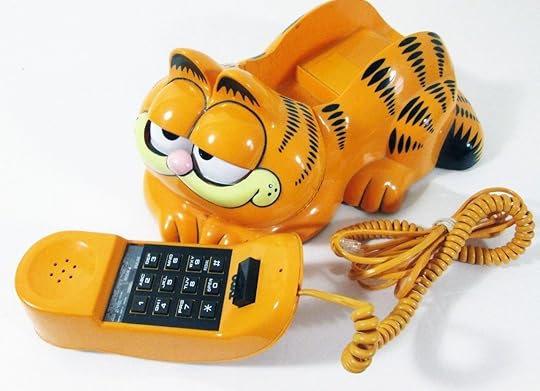
For over 30 years, orange Garfield phones (yes, as in the cartoon cat) have been strangely washing up on the French coast of Brittany. Many have speculated that the bizarre phenomenon has been due to a lost shipping container, but at last, a local farmer has confirmed this hypothesis. The farmer revealed that he discovered the container of phones after a storm in the 1980s, and now, thanks to his insight, researchers have finally been able to locate the container.

Photo: France 3 Bretagne/Youtube
The phone was once a common novelty household item, with the famous cat’s eyes opening when the receiver was picked up. Thousands were sold during the 1980s, and the phones are still popular among collectors.
Vous vous souvenez des téléphones #Garfield ? Après le premier article de @CaBelingard pour #AlertePollution, les langues se sont déliées et un agriculteur a permis de retrouver le conteneur échoué https://t.co/ru7MDssTCY (avec le bon @ cette fois-ci
Matador Network's Blog
- Matador Network's profile
- 6 followers



